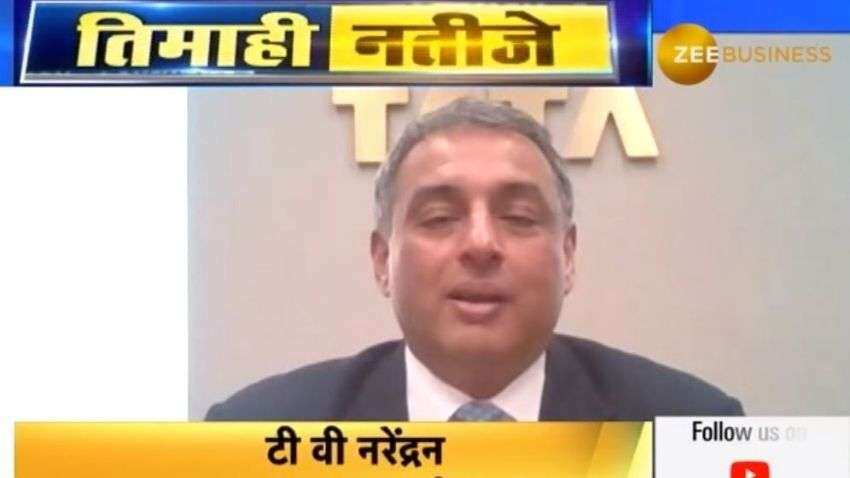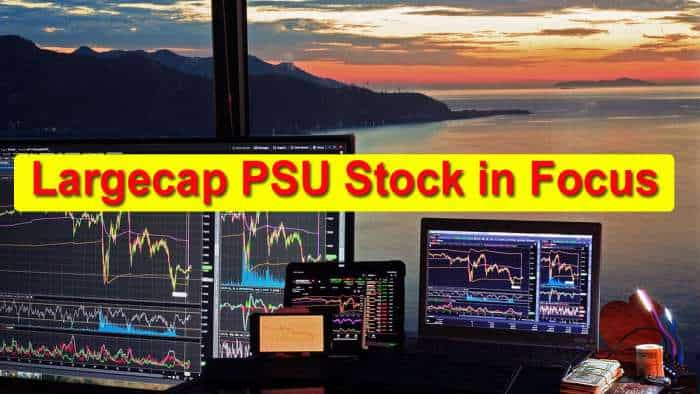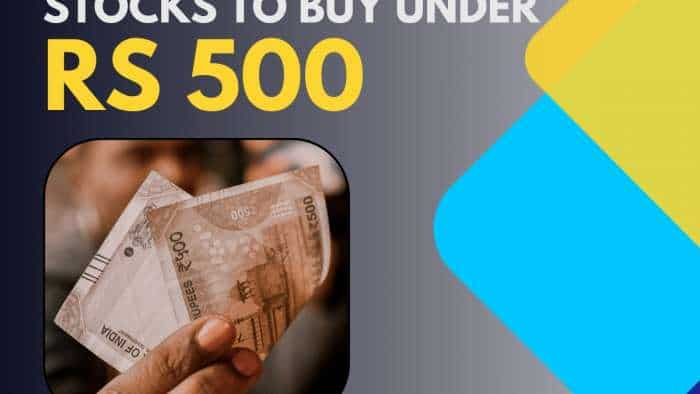Tata Steel's net debt to EBITDA will be less than 1 by end of FY22: TV Narendran, MD & CEO
TV Narendran, MD & CEO, Tata Steel, talks about Q2FY22 numbers, the trend of steel prices, guidance for FY22, raw material prices, margins, net debt situation, international business, growth opportunities organically and inorganically

TV Narendran, MD & CEO, Tata Steel, talks about Q2FY22 numbers, the trend of steel prices, guidance for FY22, raw material prices, margins, net debt situation, international business, growth opportunities organically and inorganically as well as Capex, among others, during an exclusive interview with Zee Business Executive Editor Swati Khandelwal. Edited Excerpts:
See Zee Business Live TV Streaming Below:
Q: Summarise the Q2FY22 numbers and what is your view on the same? Also, tell us about your outlook for the future?
A: I think, the performance has been in more or less as per our guidance. We had a good quarter. It was a challenging quarter, if you have a look then the steel consumption in India actually shrunk 2.50% quarter-on-quarter and our sales have grown by 11%. So, we have done quite well in India. In Europe, there was a disappointment in Q1FY22 as our spreads were not that good in the period but we have doubled our EBITDA in Q2FY22. We will continue to do well in Europe. Overall, it has been a good performance both in India as well as Europe. I think the best is not yet behind us and we can see some more good quarters.
Q: Steel prices have fallen to 5-8 months low. Do you expect the prices to recover and will Tata Steel cut the prices in the near term?
A: In the last six months, we have been driven more by the international prices. Most steel companies were exporting from India because India's demand has not picked up that much. But we are seeing India demand starting to come back quite strongly post-festival. The government's focus on infrastructure is also a positive. The auto industry is still struggling because of the semiconductor issue but we are seeing a pickup in commercial vehicles. So, we feel the best is not yet behind us, I mean that the Indian market is still growing, it is still at the early stage of recovery from the pandemic. It has come back strongly and I am positive about the opportunities in the Indian market. In Europe, we have new contracts, which are coming in. So, you will have more price stability going forward because of the new contracts and the new prices that will kick off from this quarter and the next quarter. Overall, we are reasonably positive, yes there will be volatility, we are seeing that what is happening in China and the effect of the COVID because its cases are increasing in Europe as well as in China. These are issues, there will be challenges, there will be risks but the fundamentals are still quite good.
Q: Coking coal and graphite electrode prices are shooting up. What is the outlook for raw material costs and margins on the company, going forward?
A: Coking coal prices are still quite high for India. I think, it is about $400, in China coking coal prices are around $550-600 because China does not buy it from Australia, it procures it from Mongolia, Russia or the US. We expect the coking coal prices to be on the higher side and it will be between the $350-400 range because the supply side is a big tight not too many options for good coking coal. Iron ore prices have stabilised, we expect it to be around $100, just right now, it is below $100 but it should be in the $80-120 range. As far as rest consumables are concerned, a lot of consumables that come from China the prices will continue to go up because China is cutting production, it is very tight on environmental controls, so, many consumables that we get from China whether it is refractories, magnesium, and many other consumables including graphite electrode etc. prices are going up. That is why we are thinking that the steel prices will also stay on the higher side because the input costs are not going down.
Q: On the company's financial side, we have seen that there has been a significant debt reduction and the net debt stands at Rs 68,860 crore. What will be the guidance for FY23?
A: We will continue to reduce our debt through our operational cash flows as well as in the next few quarters we also hope to do some from the working capital. The guidance we are giving is by the end of the year, we are certain the net debt to EBITDA will be less than 1.
Q: The company has divested a stake in NatSteel holdings. Port Talbot plant has seen an impressive turnaround. Are you still exploring a deal to exit?
A: In the case of Europe, as we have also said two years ago that we have a focus to run the business on a self-sustaining basis. Its first step was to split the business and we have split the UK and the Netherlands business. So, there is a sharper focus because the challenges are different in both areas. The Netherlands business has traditionally been an EBITDA positive and cash positive and we will continue to be so. The UK business has not been EBITDA positive and cash positive consistently. If you have a look then in the first half, we are EBITDA positive and by the end of the year, we will certainly be cash positive. So, overall, Europe is also showing a good performance.
Q: As you have said that India is quite buoyant as good demand is visible here. So, are you looking forward to opportunities that you are looking for in the market maybe it is on the front of the PSU or some steel companies that are coming up for sales? Is there anything that you are looking at closely to further strengthen the India business?
A: With respect to India business for flag products we have enough opportunities for organic growth from our existing sites. If you will have a look at both the Kalinganagar and Angul, we can expand here. Just through organic means, we can grow from the current 20 million tonnes to 35 million tonnes in India. We also have growth plans through the recycling route and we are setting up the first facility in the North. Then comes the privatisation, auctions, which are there but in that we will have a look at its value. We will be more interested in the long product assets. At present, the process of NINL is going on and we are looking at it. Then in RNIL as the process happens, we will evaluate it very prudently and then take a call because there are options for the organic growth is also available, so, we will basically look at the right value and then decide.
Q: What would be the Capex for the next 1-2 years?
A: We have already provided guidance of around Rs 10,000-12,000 crore as annual CapEx and if you have a look then we have spent about Rs 4,000 crore (Rs 3,600 crore). So, we are on a track for Rs 10,000-12,000 crore. I think that is a good CapEx for us to spend without compromising or deleveraging goals as well as achieving the growth ambitions that we have.
Get Latest Business News, Stock Market Updates and Videos; Check your tax outgo through Income Tax Calculator and save money through our Personal Finance coverage. Check Business Breaking News Live on Zee Business Twitter and Facebook. Subscribe on YouTube.
RECOMMENDED STORIES

EPFO Pension Schemes: Early pension, retirement pension, nominee pension and 4 other pension schemes that every private sector employee should know

Tata Motors, Muthoot Finance and 3 more: Axis Direct recommends buying these stocks for 2 weeks; check targets, stop losses
05:14 PM IST













 Tata Steel reports Rs 759 crore net profit in Q2
Tata Steel reports Rs 759 crore net profit in Q2 Tata Steel Q2FY25 preview: Weak pricing, high costs to weigh on earnings
Tata Steel Q2FY25 preview: Weak pricing, high costs to weigh on earnings Tata Steel UK signs contract for electric furnace in green steelmaking drive By Aditi Khanna
Tata Steel UK signs contract for electric furnace in green steelmaking drive By Aditi Khanna Tata Steel, L&T Finance & More: Brokerage recommends buying these 7 stocks for up to 3 months for huge profit| Check targets, stop losses
Tata Steel, L&T Finance & More: Brokerage recommends buying these 7 stocks for up to 3 months for huge profit| Check targets, stop losses Tata Steel shares gain over 1% after commissioning largest blast furnace
Tata Steel shares gain over 1% after commissioning largest blast furnace